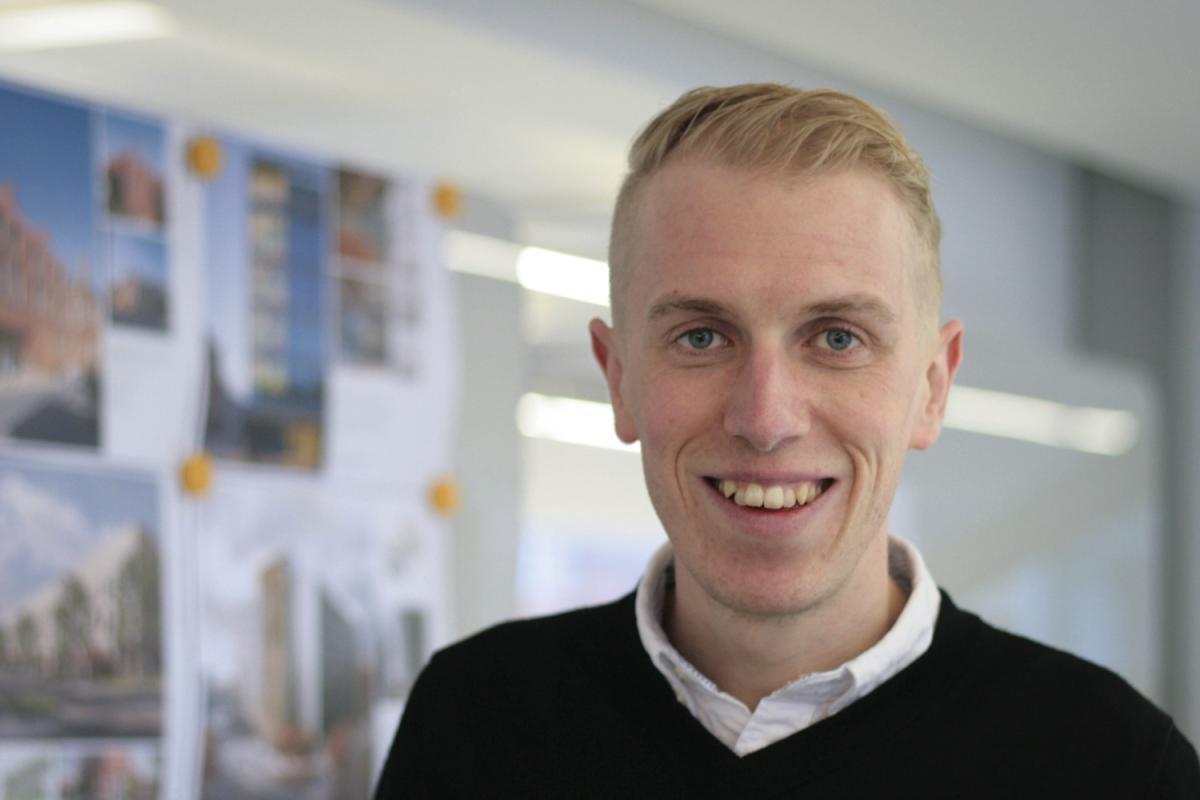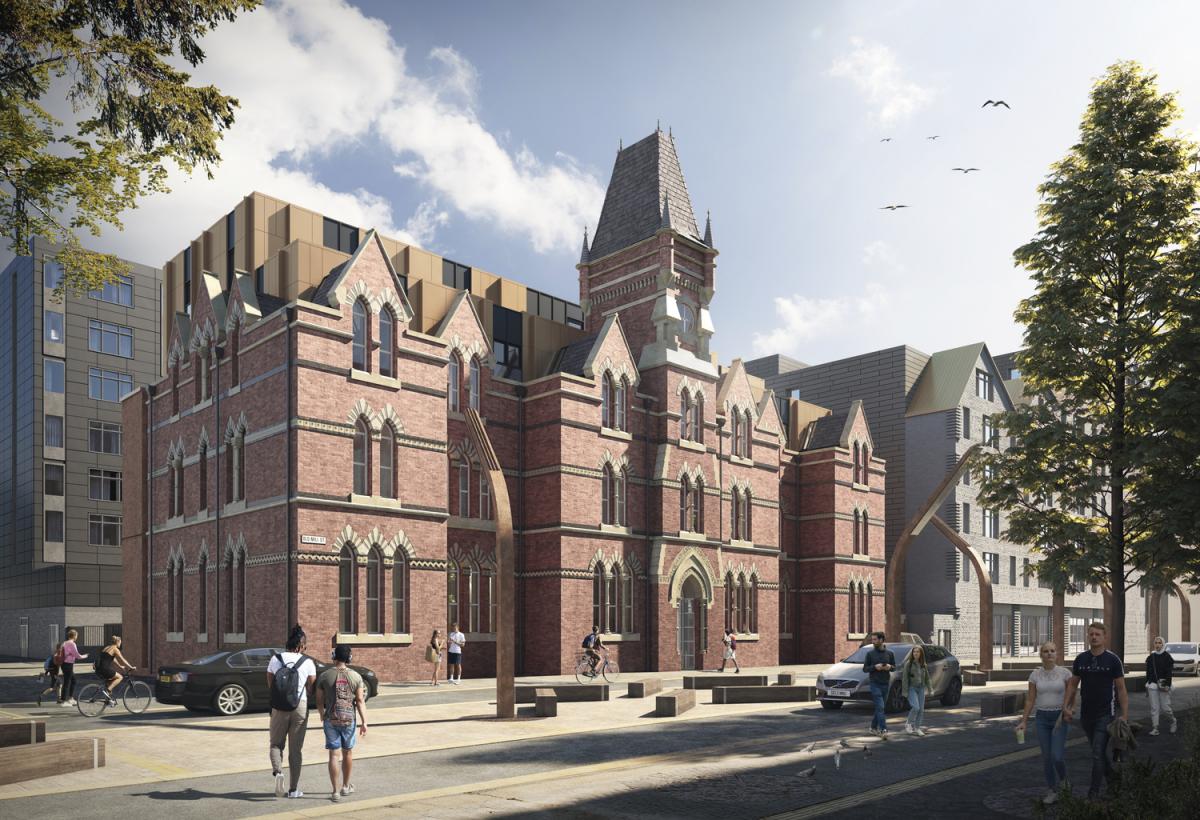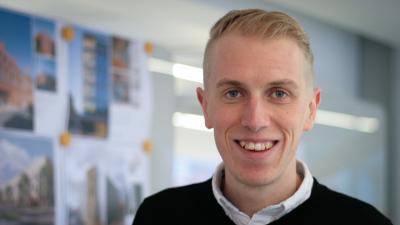
How did you start out to become an architect?
From an early age I knew I wanted to be in building design, as a child I was always drawing buildings. My mum told me I would fill sketchpads with all sorts of drawings but for some reason I enjoyed drawing particularly multi-storey car parks, with colours for different levels. Off the back of this it was my grandfather that suggested I become an architect - I think I was six years old at the time.
I joined Buttress in 2019 just before the Covid Pandemic, so it was an interesting time to join.
What advice can you give to young people considering a career in architecture?
It’s great to see that young people can now have different pathways to becoming an architect. I think apprenticeships have some genuine benefits as you get studio experience at an early stage as well as being fully immersed in the design process.
I also suggest that young people start to build a portfolio of drawings/ photos etc to help develop their style and language.
What do you enjoy the most about your job?
I enjoy the whole process of taking a concept and watching it progress on-site into a real, physical space. It's a really rewarding experience.
I also enjoy the idea of helping to create something that will have a lasting impact on people's lives. For me, good design is all about creating a space that stands the test of time. This is something that I always try to keep in mind when I'm working on a project.
Previously I worked on some former cotton mills in Brierfield, Lancashire which were incredibly interesting. Looking back - I’ve probably worked on more existing buildings than new ones - it’s always something I’ve been interested in and I’m so lucky that I get to work in both disciplines. Ancoats Dispensary is a perfect blend of both, retaining and revitalising an existing Victorian façade whilst integrating a modern set of apartments to the rear which will hopefully extend the building’s lifespan for the next 50-70 years.
Could you tell us a bit about your involvement with Buttress’ carbon calculator?
This is an area which is gaining a lot of interest in the industry. It’s born from the desire to understand what we are specifying as architects. In the past, I’d say that the primary drivers on a project have been aesthetics vs. cost and whilst both are fundamental to a well-balanced design, there’s now an additional parameter which is mixed into this and that’s the carbon cost. It’s this dynamic that’s interesting because it’s something that was never considered a few years ago and it comes with a whole new language in how we think about sustainable design.
We’ve done a high-level exercise with the carbon calculator on several projects where we looked at different massing to see how this would affect the embodied carbon. At the very early design stage, the figures we receive are not 100% exact, but they can provide a baseline for comparison when appraising different options in terms of scaling, layout and orientation. We can then make informed decisions about the design of the building.
Recently, the results of one particular project were fascinating. The client was looking at alternative sites which restricted the form of the building. When we looked into this with the carbon calculator it showed a dramatic increase in carbon footprint. This calculation, which wasn’t available a few years ago, helped the client to an informed decision.
What’s your favourite project?
When I first started at Buttress, I was working on the award-winning Atelier in Salford which was completed on-site in 2021.
The project I have had the most direct involvement with so far though is Ancoats Dispensary, which is currently on site. I have been lucky to have overseen this from Stages 1 & 2 onwards.
The Dispensary was built in 1874 to provide healthcare for the city's growing population, it was in use until 1989 but has remained vacant since then. As a result, the building has experienced extensive deterioration and what remains of the existing structure is in poor condition.
It's a challenging project, but this problem-solving element is something that I enjoy. For example, the building's original tower was taken down around 2011 and put into storage. Spread across numerous pallets - it was tricky for us to reassemble virtually as we had no original drawings to work from. We used historic photographs of the structure combined with Revit to help us understand how each piece of the tower fit together. Work to rebuild this on-site is due to commence imminently and it will represent one of the most important aspects of the regeneration in terms of its iconic features which are synonymous with the original hospital

What do you enjoy most about working at Buttress?
The people and the support network. I’ve not experienced this anywhere else. People are very comfortable about asking for advice and giving support. There’s also the opportunity to take your career in many different directions. For example, when I expressed an interest in the carbon calculator, I was invited to be part of it from the beginning. Everyone gets this level of personal development and it means that the practice moves forward and stays current.
I also enjoy that people have such great passion for the projects that we’re working on. The variation of the projects, multiple sectors and that the fact that we keep winning work is testament to Buttress’ people and teams.
Looking forward I am also going to be taking part in a charity ride on the 30 April to raise money for local charity ‘Mustard Tree’. Outside of architecture, cycling is one of my other great passions so it’s great that we have the ability and willingness as a practice to get involved with this. So far, we have a team of 13 participating in the Tour de Manc and I am thankful to be a small part of this.
Paul Nelson
Paul is a skilled architect with experience across the residential, education and healthcare sectors.
Paul is passionate about expanding the use of BIM in the delivery of projects and is experienced in the implementation of Revit as a tool for coordinated design and surveying.
